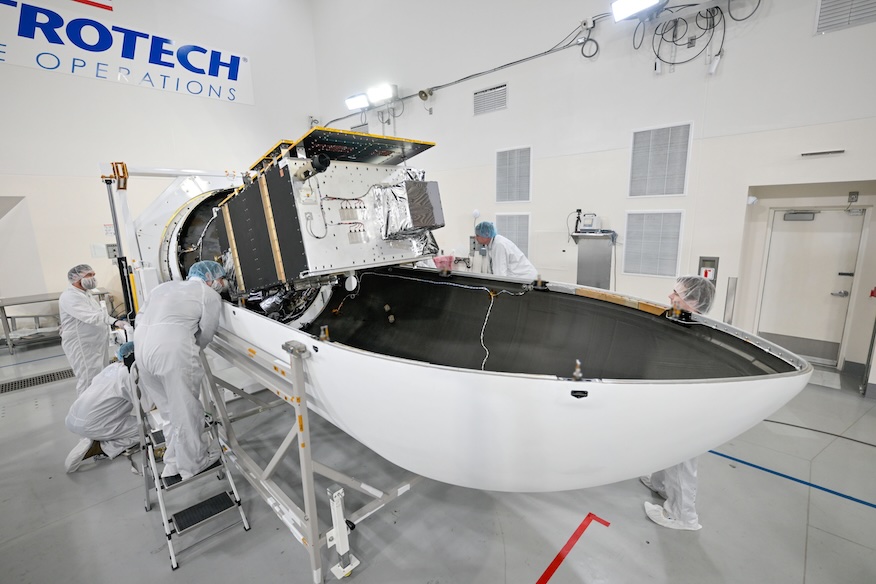On April 29, 2025, Firefly Aerospace’s Alpha rocket faced a significant setback with the failure of the FLTA0006 mission, which was intended to deploy the LM 400 Technology Demonstration satellite for Lockheed Martin. The launch, which took place from Vandenberg Space Force Base, ultimately failed to deliver the payload to orbit, raising concerns about the rocket’s reliability and the implications for future missions.
Details of the Launch and Anomaly
The Alpha rocket lifted off at 9:37 a.m. Eastern time, drawing attention as this was the sixth launch attempt for the rocket series. However, shortly after the separation of its two stages around two minutes and thirty-five seconds into flight, things took a turn. Observations indicated a cloud of debris and video footage revealed damage to the upper stage’s Lightning engine, particularly its nozzle.
According to Firefly, the rocket experienced a critical issue shortly after the separation of its stages. The statement confirmed that the upper stage, while it ascended to a peak altitude of 320 kilometers, did not achieve the necessary velocity to reach orbit, resulting in the payload—Lockheed Martin’s LM 400 satellite—re-entering the Earth’s atmosphere and falling into the Pacific Ocean. The investigation is underway, with Firefly working with the FAA to determine the root cause of this anomaly.
“Firefly recognizes the hard work that went into payload development and would like to thank our mission partners at Lockheed Martin for their continued support,” read an official statement from Firefly.
The Implications of the Launch Failure
This failed launch is a significant blow not only for Firefly Aerospace but also for Lockheed Martin, as they had high expectations for the LM 400 satellite demonstration. Lockheed Martin had earmarked this launch as the first of a planned series of up to 25 missions intended to bolster their satellite capabilities.
Bob Behnken, Vice President of Exploration at Lockheed Martin, acknowledged the challenges faced during this rapid demonstration phase. Navigating risk during self-funded tech demonstrations is part of the strategy, but this failure may require reevaluation of designs and timelines as they move forward.
Previous Launch Experiences with Alpha
Prior to this incident, Firefly’s Alpha rocket had already faced several challenges. The inaugural flight in September 2021 saw the rocket losing control shortly after launch. Although Alpha managed to reach orbit on its second attempt in October 2022, it placed payloads into lower orbits than expected. Success came with Alpha’s successful launches carrying cubesats and the Victus Nox satellites; however, this latest setback underscores the ongoing volatility surrounding the rocket and the associated technology.
Understanding the LM 400 Technology
The LM 400 satellite bus was designed as a mid-sized, multi-mission satellite platform capable of supporting a variety of payloads. The innovative designs are intended to attract classified and non-classified customers, offering substantial operational versatility in orbit. Lockheed Martin’s investment in the LM 400 program underscores a commitment to advancing satellite technologies and capabilities, but the recent loss raises existential questions about its viability and market positioning.
The Future of Firefly Aerospace
Moving forward, Firefly Aerospace faces immense pressure to address the anomalies encountered during the Alpha launch. The company must not only restore confidence in its rocket technology but also provide assurances to its clients, especially Lockheed Martin, of reliable launch services. This incident may serve as a critical juncture for the company as it seeks to capitalize on the growing satellite launch market.
Firefly is ramping up its production and testing capabilities in anticipation of future demands in the industry. The commitment to reliability, coupled with cutting-edge technological advancements, will be essential as Firefly constructs its image in a competitive landscape filled with established players such as SpaceX.
Conclusion
The recent failure of Firefly Aerospace’s Alpha rock launch has undoubtedly frustrated stakeholders and raised questions about future missions. As the investigation continues, the company must focus on resolving technical challenges and enhancing its operational capabilities. The success of the upcoming missions will be pivotal, not just for Firefly but also for Lockheed Martin as they strive towards innovation through satellite technology. Only time will tell how quickly they can bounce back from this setback.
Ultimately, this incident serves as a reminder of the inherent risks in space exploration and the importance of robust processes that can adapt to unforeseen challenges. Innovation will continue to rely on lessons learned from failures, ensuring each step forward is grounded in the experience of those who have faced and overcome obstacles along the way.
The path, though fraught with challenge, is also ripe with opportunity for reimagining the possibilities of space technology, with companies like Firefly Aerospace and Lockheed Martin leading the charge.
By embracing innovation while learning from setbacks, the companies may ultimately redefine the future landscape of space exploration.

